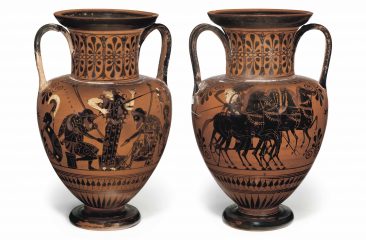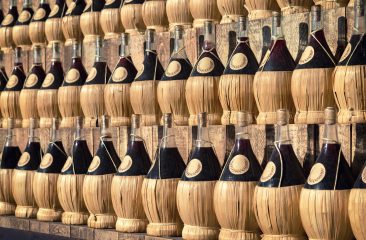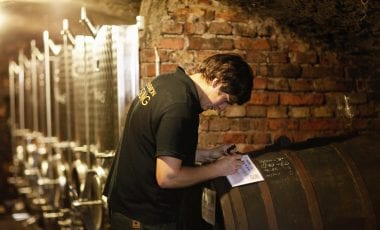About 6,000 years ago, people discovered that a tasty drink can be produced by fermenting grapes. But they also found that the delicious vine juice spoils very quickly again. In the vessels available at that time he did not stay long. It was not until the invention of the tightly sealed glass bottle in the 17th century that the quickly consumable drink turned into the maturing stimulant we now know as wine.
Antique amphorae for wine
Already in Greek antiquity and later, especially among the Romans, the knowledge of matured wine from well-sealed amphorae (jar or jug with two handles and a narrow neck) was quite common. The Romans even knew the closure of these vessels by means of corks. But this knowledge, like so many of the achievements of antiquity, was largely lost in the Middle Ages. The wine was therefore stored and sold for many centuries only in barrels and tubs.

Amphorae – an ancient Greek jar or vase with a large oval body, narrow cylindrical neck, and two handles.
For the enjoyment, he was then tapped in pitchers or jugs. The quality and hygienic condition of these containers – sometimes even hoses made of animal skins – made sure that the wine quickly oxidized. As a result, he lost his aroma or the particularly active in contact with oxygen bacterium acetobacter aceti turned him into vinegar. So it was always important to keep the barrels full to minimize the contact surface with the air – or to drink quickly.
In front of the glass bottle came the stoneware jug
The first bottle shapes developed from the stoneware jugs used for the tap on the barrel. These were increasingly equipped with a narrower and thus finally closable neck. But also materials like tin, tin or wood were used for early forms of the wine bottle.
Probably starting from the Venetian glassworks, the production of glass wine bottles took place for the first time at the beginning of the 17th century. The material proved to be ideal for wine due to its chemically neutral nature and perfect tightness. However, since glass was at that time an extremely luxurious, and in addition extremely fragile commodity, at first only the nobility and especially wealthy trading booth could afford the expensive glass bottles – and that only for particularly valuable plants.

The first bottles of wine were wrapped in raffia – just like the Chianti wine bottle today
The breakthrough of the glass bottle
These early bottles were closed for a long time with knots made of leather or cloth, sealing wax or Holzpropfen, later also with a cut glass stopper. However, the final breakthrough of the wine bottle came only with the rediscovery of cork cut from the bark of Spanish and Portuguese oak trees ( Quercus suber ), which offered a really airtight and durable closure by their elasticity and durability, thus allowing a slow maturation of the contents.

The wine bottle experienced its breakthrough with the rediscovery of the cork oak.
